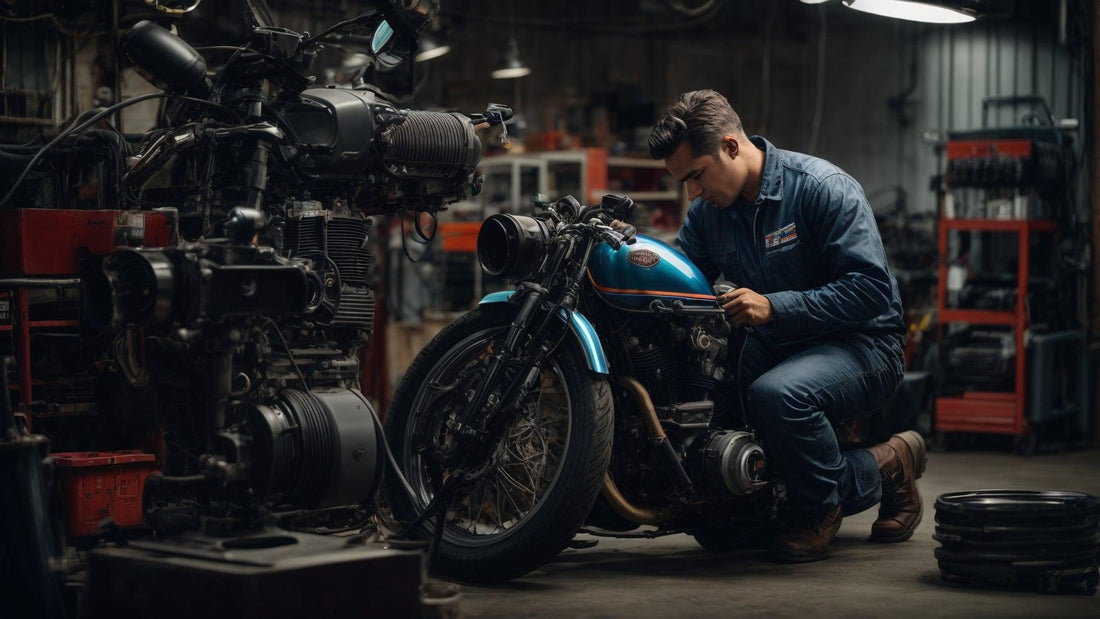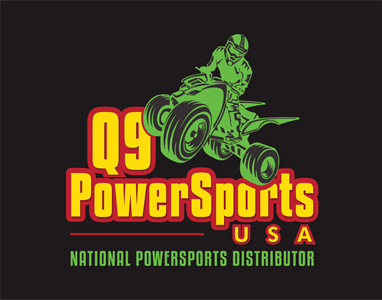
How to Troubleshoot a Motorcycle That Won't Start
Q9powersportsusa.com StaffShare
What do you do if your motorcycle wont start
Motorcycles are a thrilling mode of transportation, offering a sense of freedom, speed, and adventure. However, it can be incredibly frustrating when your motorcycle refuses to start. Whether you're planning an exciting ride or simply need to get to work, a non-starting motorcycle can put a dent in your plans. In this comprehensive guide, we will walk you through a step-by-step troubleshooting process to help you diagnose and fix the issue.
1. Check the Battery
The first step in troubleshooting a motorcycle that won't start is to check the battery. Ensure that it is properly charged and securely connected. Use a multimeter to measure the voltage. If the battery voltage is low, recharge it or consider replacing it if necessary. Keep in mind that a weak battery may still have enough power to illuminate lights but not enough to start the engine.
2. Inspect the Fuel System
Next, inspect the fuel system. Check if there is enough fuel in the tank. If the motorcycle has been sitting idle for a while, the fuel may have deteriorated, clogging the fuel lines or filters. In such cases, drain the old fuel and replace it with fresh fuel. Additionally, check for any fuel leaks that could be preventing fuel delivery to the engine.
It's also important to note that some motorcycles have a fuel valve or petcock that needs to be open for fuel to flow to the engine. Make sure the fuel valve is in the correct position.
3. Test the Ignition System
If the battery and fuel system are in good condition, the issue could lie with the ignition system. Check if the spark plugs are functioning properly. Remove the spark plugs and inspect them for any signs of damage or fouling. Clean or replace them if necessary. Use a spark plug tester to ensure that the plugs are producing a spark. If you have an older motorcycle with points ignition, check the points for proper gap and clean them if needed.
Additionally, check the ignition coils or coil packs to ensure they are providing sufficient spark. Faulty ignition coils can prevent the spark plugs from firing, resulting in a motorcycle that won't start.
4. Examine the Electrical System
Faulty electrical connections or components can prevent a motorcycle from starting. Inspect the wiring harness for any signs of damage or loose connections. Check the fuses and replace any blown ones. If you have a fair understanding of electrical systems, you can use a multimeter to test various electrical components such as the starter motor, solenoid, and ignition switch. It's also important to ensure that the kill switch is in the correct position.
5. Evaluate the Engine Compression
A lack of engine compression can also be the reason behind a motorcycle not starting. Use a compression tester to measure the compression levels. If the compression is low, it could indicate issues with the valves, piston rings, or cylinder walls. In such cases, it is recommended to seek professional assistance.
6. Check the Carburetor or Fuel Injection System
If your motorcycle is equipped with a carburetor or fuel injection system, it's crucial to check for any problems in this area. A clogged carburetor jet or a malfunctioning fuel injector can prevent the engine from starting. Clean the carburetor or have a professional clean it for you. For fuel-injected motorcycles, ensure that the injectors are clean and functioning properly.
7. Inspect the Air Filter
A dirty or clogged air filter can restrict airflow to the engine, leading to starting issues. Remove the air filter and inspect it for dirt, debris, or excessive wear. Clean or replace the air filter if necessary.
8. Verify the Timing
If your motorcycle has an adjustable ignition timing, ensure that it is set correctly. Incorrect timing can cause starting problems. Consult your motorcycle's manual for information on how to set the timing correctly.
9. Check the Exhaust System
An exhaust system with a blocked or damaged muffler or catalytic converter can affect the performance of your motorcycle and cause starting issues. Inspect the exhaust system and address any issues that may be hindering the flow of exhaust gases.
10. Consult the Manufacturer's Manual
If you have gone through the previous steps and are still unable to identify the problem, consult the manufacturer's manual specific to your motorcycle model. The manual often contains troubleshooting guides and specific instructions for your particular bike.
Conclusion
Troubleshooting a motorcycle that won't start can be a challenging task, but by following these steps, you can narrow down the potential issues and save time and money on unnecessary repairs. If you are unsure or uncomfortable performing any of these steps, it is always best to seek a professional powersports service center help. Remember to prioritize safety while working on your motorcycle and enjoy the thrill of riding once you have it back up and running.
